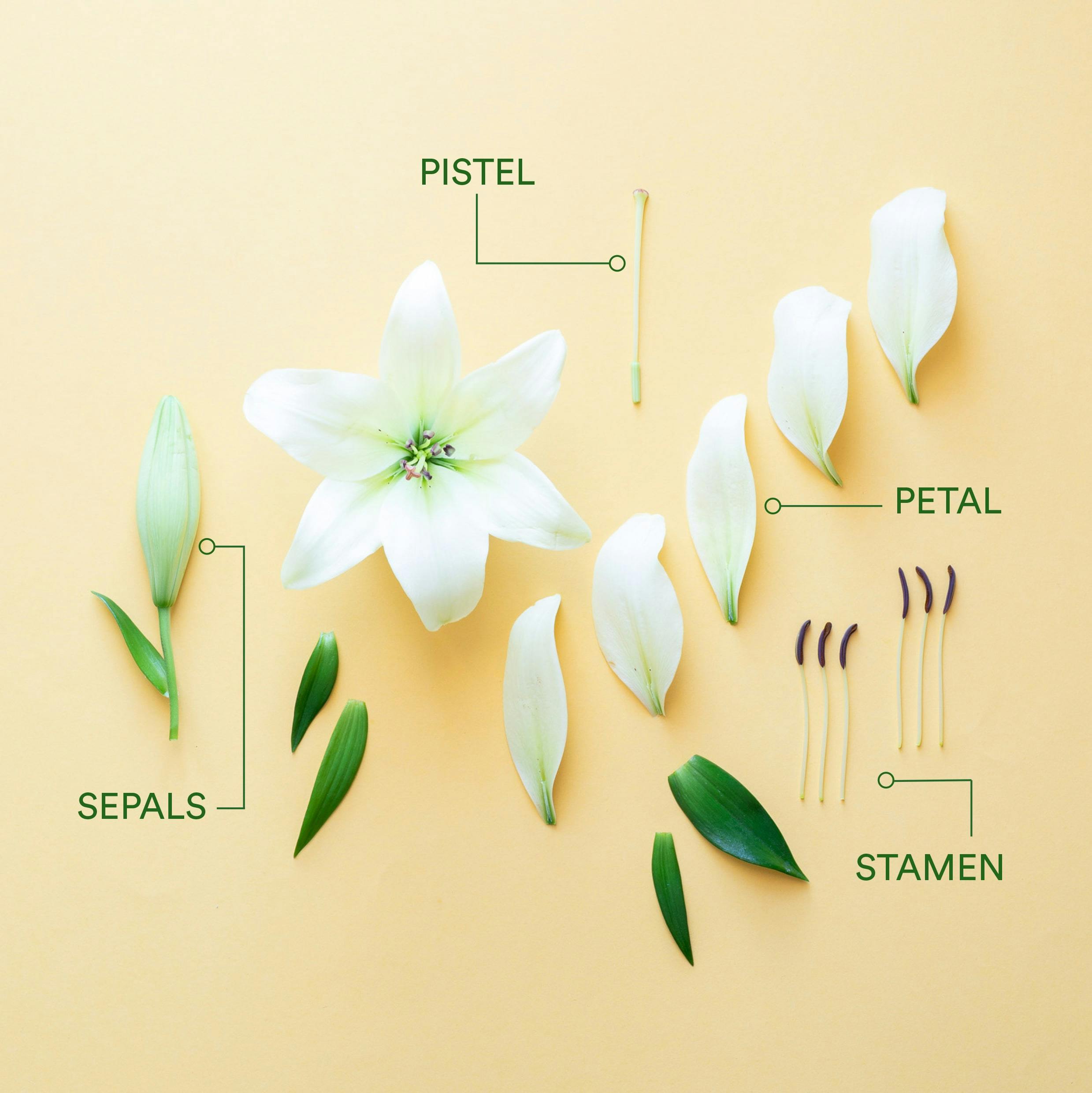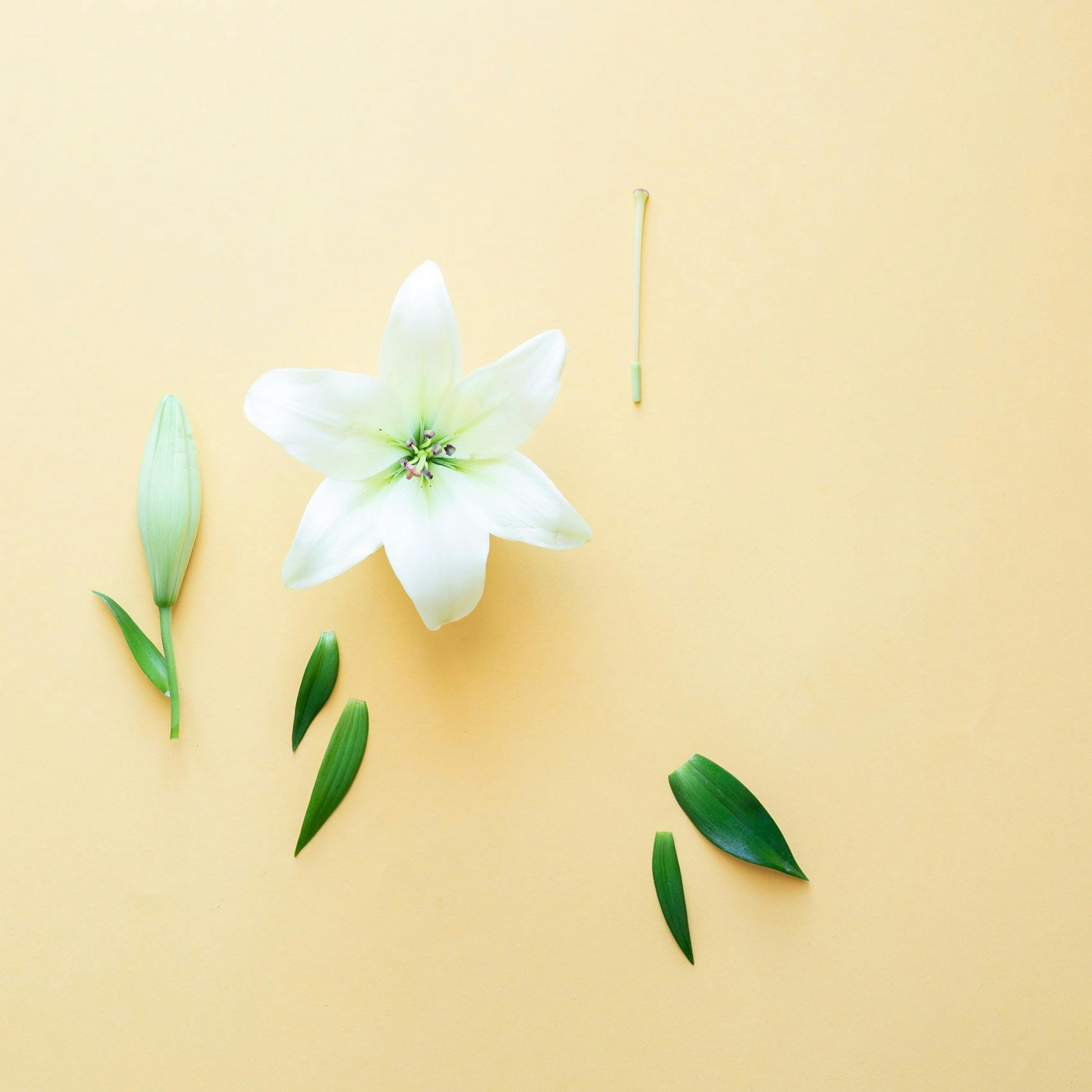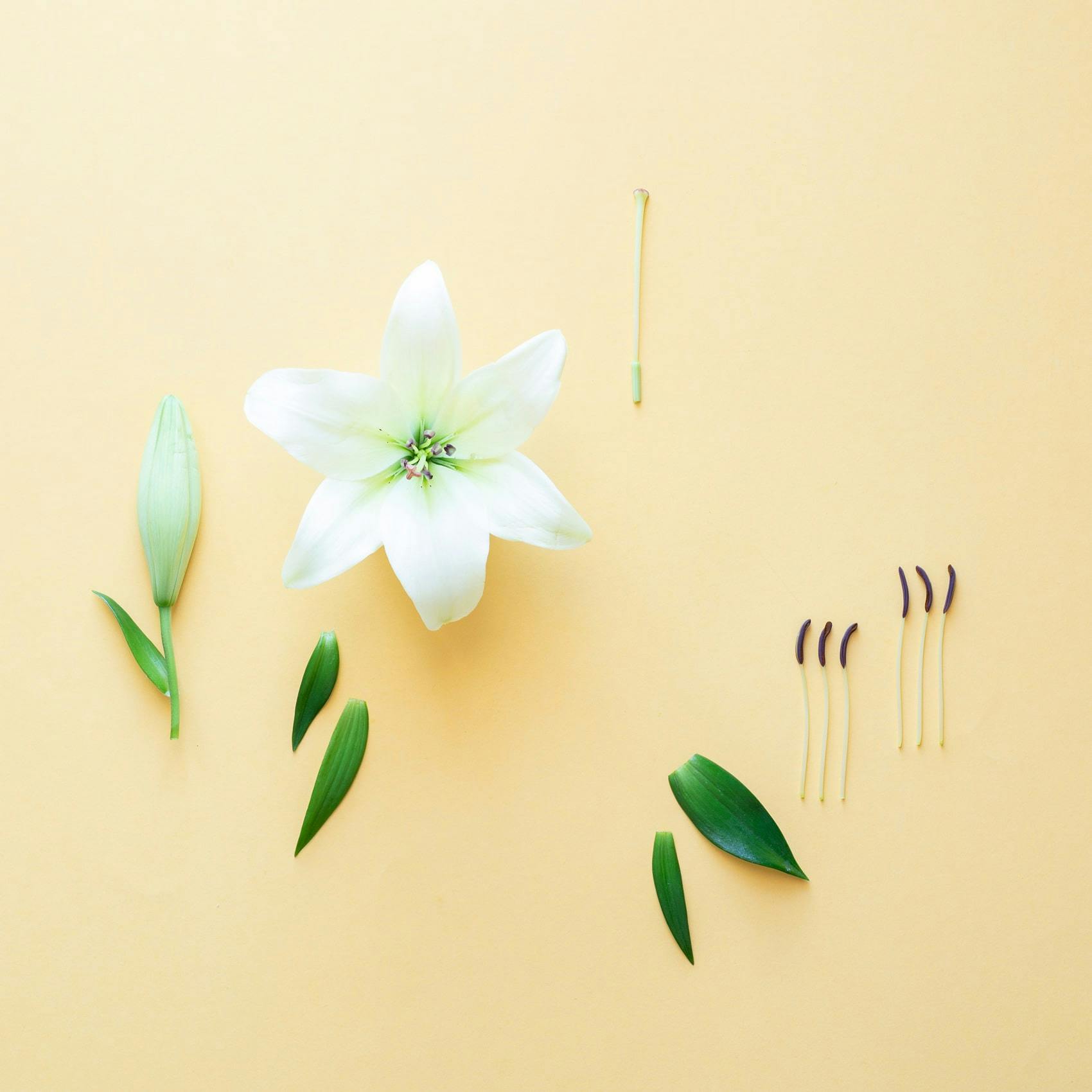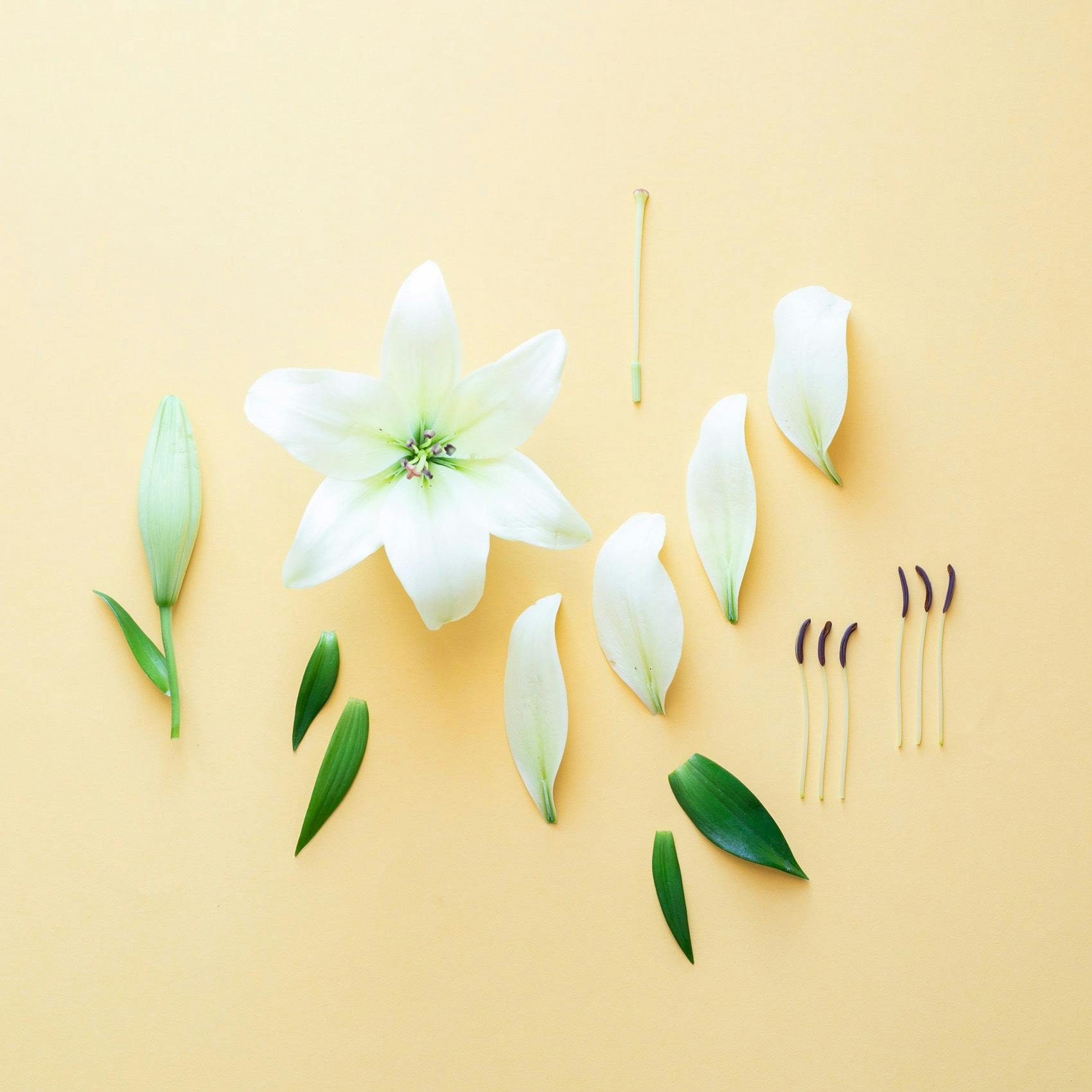MENU
How To Identify The Main Parts Of A Flower


Despite their use for decoration and beautifying a home, it’s sometimes easy to forget that fresh flowers are very much alive.
Flowers are intricate working organisms, even after they’re cut and there’s a lot going on with these natural wonders we enjoy in our bouquets. We’re going to quickly break down and identify the main parts of a flower to demystify their anatomy. It may have been a few years since your last High School biology class but there’s more to flowers than just petals and stems.
As you’ll see flowers are quite sophisticated plants.
Pistel

This is the female part of the plant, which is found in the centre of the flower and comprises 4 parts:
- Stigma – This is sticky top of the pistel where pollen is collected to fertilise eggs
- Style – The long stalk that holds up the stigma
- Ovary – Found at the bottom of the pistel where the ovules are located
- Ovules – This is where the egg cells are found and where the seeds are created
Sepals

What are sepals and how are they different from petals you might be asking? Well, luckily there’s a simple answer to that. The sepals are the sturdier, greener outer petals that protect the flower bud before it fully blooms.
Stamen

The male part of a flower, on the other hand, is a little bit different from the pistel. Sometimes, depending on the flower, they might even be found attached to the pistel. There are also fewer parts to the stamen which include:
- Anthers – The pollen sacs of a flower
- Filament – The short stalk which holds the anthers
Petals

We probably wouldn’t be attracted to flowers as much as we are without their petals and appropriately this is just what they were designed to do. Their main job is to attract pollinating insects to help the flower reproduce. This is why they are brightly colored whilst looking and smelling amazing as they are there to grab your (or a passing bee or butterfly’s) attention.
Stem (or Peduncle)

The peduncle, more commonly known as the stem of a plant, is the lifeline of a flower as it carries water and nutrients from the roots up through the plant. Even without roots the stem can also absorb water but cannot filter out harmful bacteria. This is why cut flowers need fresh clean water every few days. The peduncle also comprises two other key parts:
- Leaves – Which gather solar energy for the plant to grow
- Receptacle – Where the stem thickens and carries the flowering section of a plant
What do you think is the best part of a flower? Let us know in the comments below.
With our international delivery service, you can share the magic of fresh flowers in over 100 countries around the world. Simply choose from one of our bestselling bouquets and in a few clicks, you can surprise almost anywhere in the world.
